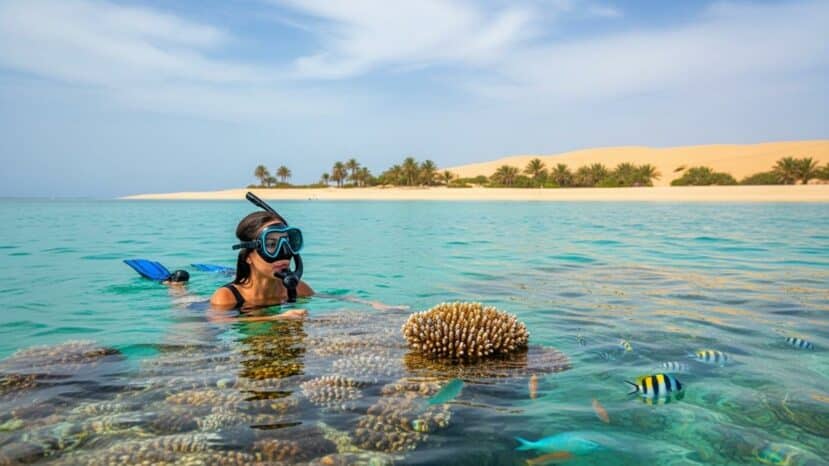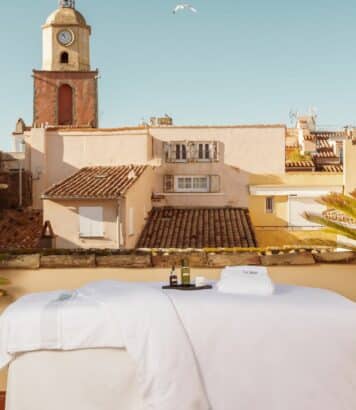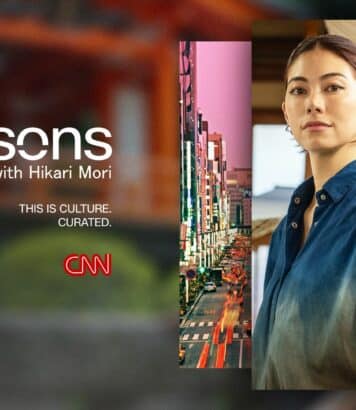Saudi Arabia: the oasis that surpasses the Maldives in beauty and eco-responsibility

Between dunes, mangroves and reefs, a destination on the Red Sea in Saudi Arabia is catching the eye. Its challenge: to combine unspoilt beauty with sober resource management, far from clichés. As a result, the curious traveler finds a clear promise of meaning and pleasure.
An oasis on the Red Sea, between desert and reef
The site extends over an archipelago of more than 90 islands and an unspoilt coastline. The transparent waters are home to some of the best-preserved coral reefs in the region. In Saudi Arabia, this rare geography offers calm lagoons, seagrass beds and deeper drop-offs. What’s more, the desert-ocean contrast creates a unique light at sunrise.
The managers announce strict protection of a large area, with few islands open to visitors. The aim is to promote positive-impacttourism, with wildlife monitoring and limited access. As a result, turtles and seabirds retain their nesting and resting habits. This ambition sets Saudi Arabia on a new trajectory in the region.
Concrete proof of regenerative tourism
Operational energy is provided by solar power 24 hours a day, thanks to extensive battery storage. Internal shuttles are emission-free and noise-free. In addition, a renewable energy-powered desalination plant supplies fresh water, with grey water reuse. In Saudi Arabia, this approach reduces pressure on already arid environments.
“Here, luxury rhymes with sobriety: protecting the reef means protecting the future of the voyage.”
Teams restore mangroves to sequester carbon and defend the coastline. They document the condition of coral and seagrass beds before each project. In this way, impact measurement precedes the work and guides technical choices. This protocol is gaining ground in Saudi Arabia.
The buildings are built off-site, using less carbon-intensive materials. Lighting remains directed towards the ground, to preserve a dark sky. What’s more, the site bans
- Access designed to limit flows and reduce footprint.
- Quiet seasons to respect wildlife.
- Operational energy 100% renewable.
- Scientific monitoring of corals and mangroves.
- Strict waste and water policy.
Access, seasons and setting: preparing a responsible trip
The route arrives via a coastal airport that is currently being upgraded. Progressive frequencies link the site to the rest of the country. An off-grid power grid secures the 100% renewable supply. In Saudi Arabia, these logistics illustrate a shift towards low-carbon services.
The best weather window is outside the heat peaks. On site, shade, hydration and flexible schedules reduce heat stress. Also, swimming is based on the tide and wind, to protect the sea grass beds. Visitors respect the marked zones, as the tranquility of the reef is paramount.
For divers, visibility varies according to wind and season. The centers limit group sizes and boat speeds. As a result, the sites reduce noise and turbidity. In Saudi Arabia, this environment allows you to enjoy marine life without disturbing it.
Local jobs, culture and science in the field
Training courses to upgrade the skills of young people on the coast. Trades range from solar maintenance to marine protection. In this way, sustainable careers are being created close to the villages. Saudi Arabia is banking on this sector to diversify its economy.
Our heritage can also be seen on nearby desert routes. Guides interpret landscapes and caravan trails. In addition, excavations and surveys enrich our knowledge of the Gulf of Aqaba. Research advances, then feeds the experience of travelers.
Why this destination is shaking up high-end codes
The model emphasizes long life and sobriety. Nights are quiet, with no intrusive music on the beaches. Consequently, the stars and the sounds of the sea become the heart of luxury. In Saudi Arabia, this definition stands in stark contrast to traditional beachwear.
Design takes a back seat to nature, with low lines and sandy colors. Villas blend into each other, while paths are designed for walking. Experiences also limit artifice to preserve the sensitive relief of the place. This approach gives meaning to even the most demanding stays.
Those in charge have set a clear course: a net gain in biodiversity of 30% by 2040. Public indicators track key habitats and species. After that, each opening is accompanied by a controlled visitor threshold. In Saudi Arabia, this roadmap creates a useful benchmark for the region.
From a sensory point of view, the Red Sea offers a very fine palette of blues. The water remains warm, but the breezes soften the day. What’s more, the sunsets over the islets offer a rare scene. This natural theater is just as appealing to families as it is to enthusiasts.





No comments
Post a comment
Always participate in accordance with the law and with respect for others.